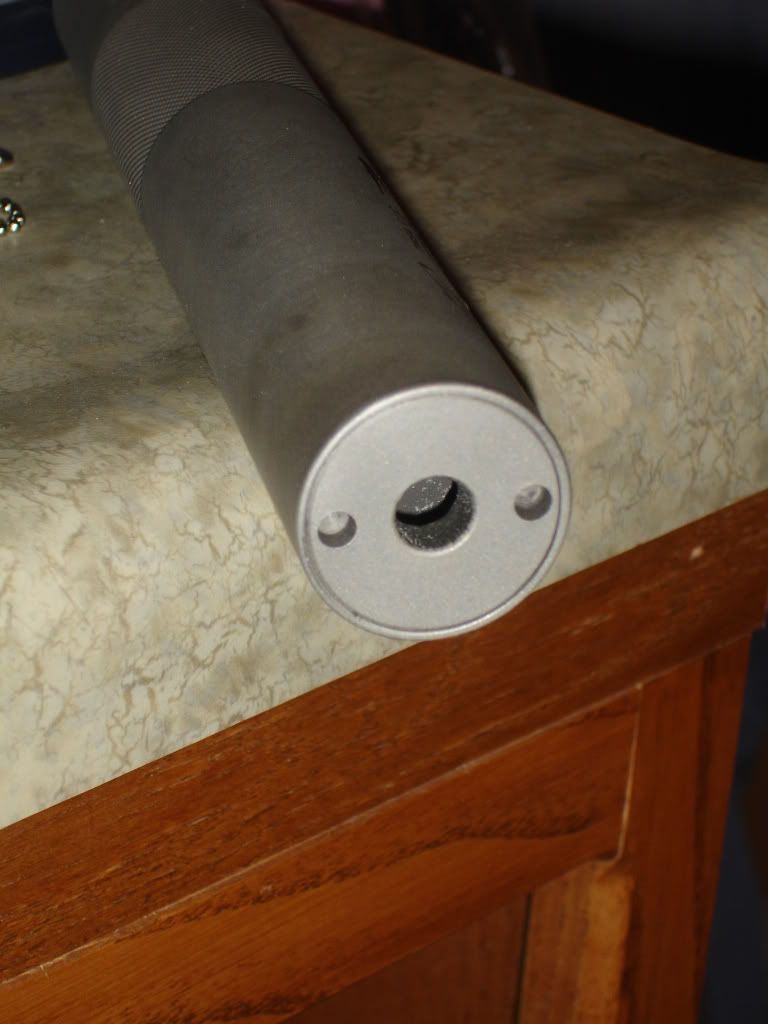Re: Brief History of Griffin Armament/HP LLC.
Thanks guys.
I appreciate it-
---------------------------------------------------------------
<span style="font-weight: bold">Since this weld quality of the 25 unit Bushwacker comment has been a recurrent theme over the years, I figured it was probably time to explain and compare welds. </span>
As stated previously, the Bushwacker suppressor was a 25 unit production run, and we sold them for $400. The Bushwacker is ~32.5DB sound suppressor on a 14.5" M4 carbine. They are strong, and they work. I have shot them side by side with SOF personnel on deployment, and the people present always said the Bushwacker sounded better than the NT-4 (and the NT-4 sounds perfectly great IMO, just not quite as good, and as our $400 unit is not a QD suppressor, it's not really a fair comparison).
The KAC QDSS-NT-4 Retails for $1300-$1500 online from what I can tell VIA Google shopping. The NT-4 is ~29DB sound suppressor on an 14.5" M4 carbine. It is an excellent sound suppressor- DOD has purchased 40,000-60,000 as far as I'm aware, and this comparison is just an effort to confront this argument that low quality welds were used in our product. I've not seen any comments about ugly welds on KAC suppressors that I can recall. I've also not seen anyone suggest that KAC suppressor welds look like a Tech school project. These kinds of arguments have surrounded our suppressor, however and are the reason welds are now dressed in our current/future products such as the BEAST .338LM, RSTA 30 cal, and M4SD-II.
<span style="font-weight: bold">This comparison is valid IMO because both these units have some undressed filler rod TIG welds, where some of the other suppressors on the market have Fusion TIG welds that use no filler rod. Fusion tig will almost always look better than filler rod TIG because no rod is added so the component geometry is controlled by the machined parts. Filler rod TIG welds are typically stronger, despite their lower quality aesthetic appearance.</span>
We'll start with a baseline- our rear cap filler rod weld. This is an actual picture of an actual unit I had my hands on TODAY- not a potentially photoshopped picture from the internet used to smear our products.
Our welder was a 20 year journeyman subcontracted for the job, so I'll sustain that whatever isn't pretty about this weld is probably related to my design geometry not being ideal for welding with good appearance. This weld was TIG fusion welded at the root, with a second pass using filler rod, so that we could get 100% of the .125" thick material welded, and then some given the filler rod is ~.01" high of the rear of the unit. It also has been spot faced and there is a slight burr on the non-critical outside edge of the spotfaced area.
To start we'll compare the rear cap weld to the tube- this is probably TIG fusion welded without rod so it's not completely apples to apples.
Here are the front cap welds of the KAC product. These look like TIG fusion welds without rod also.
This image shows the Filler Rod welds that turn the bent perforated sheet metal into the "Girdle". Also visible are some of the resistance spot fusion welds of the baffles to the tube (these are under the girdle). The resistance fusion spot weld is similar to technology used in the Auto industry for assembling stamped panels into doors- etc if I'm not mistaken.
There is a single small spot weld on the girdle adjacent the fusion welds that might be where the flash hider indexing pin hole was drilled and the pin installed (or might not)- at any rate it looks like a weld.
This image shows the girdle from the front of the suppressor. Evident here is that the girdle is not concentric to the tube. Spacing on the left side is about .010". Spacing on the right side is about .03-.045". The filler rod welds on the front of the girdle are not all similar in length.

















